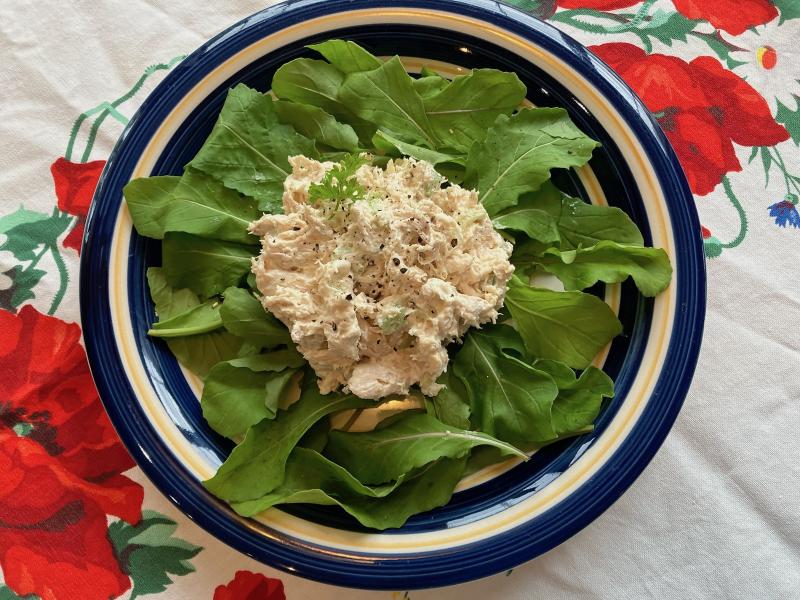Recipes from Mrs. Child - but not the one you’re thinking of
As many of you may know, I enjoy reading historical cookbooks. Although they are called cookbooks (or cookery books), they also offer details into how people lived during a specific period of time. The authors’ commentaries are typically filled with unvarnished advice about how to live properly, how to raise children, criticism about what people do wrong, and guidance on which choices are more appropriate.
One of the most popular early books, published in 1829, was “The Frugal Housewife” by Lydia Maria Child. This was the first American book of household management specifically focused on middle-class and poor women. A few years after its original publication, Child changed the book’s name, as she explains in the introduction. “It has become necessary to change the title of this work to the American Frugal Housewife, because there is an English work of the same name, not adapted to the wants of this country.” Later in her introduction, she shares her purpose for the book, telling readers, “Books of this kind have usually been written for the wealthy: I have written for the poor.”
The chapters that follow carry names that support her assertion, from ‘Simple Remedies’ and ‘Cheap Dye Stuffs’ to ‘Common Cooking.’ Her commentary about the choice of meat advises not to select the cheapest by price, but how far the cooked meat can be stretched into multiple meals.
Her recipes are comparable to many you will find in books of this time. The instructions are vague, and specific amounts of ingredients are rarely indicated. For example, her cherry pie recipe doesn’t include a quantity of cherries, and it neglects to tell the cook to remove the stones before placing them in the pie pan between two crusts, sprinkled with “a little” sugar and cinnamon.
Mrs. Child, as she was called, wrote extensively about anti-slavery topics, support for Native Americans and women’s suffrage. She was one of the earliest proponents of reparations for the previously enslaved. She and her husband started a business to produce beet sugar as an alternative to cane sugar, which relied on enslaved workers. When the business failed to thrive, Mrs. Child relocated to New York City and resumed her successful literary career.
One of the surprising recipes Mrs. Child featured in the “American Frugal Housewife” was lobster salad. The seafood we now consider an expensive delicacy was treated as poor man’s food during the early to mid-19th century, when it was cheap and plentiful. Food historians describe the vast abundance of lobster along the Eastern Seaboard, which made it a choice to feed prisoners, enslaved individuals and farm animals until the 1880s.
Her recipe is somewhat vague, combining finely chopped lobster with shredded lettuce. The dressing ingredients are what you would use to make mayonnaise, but she omits the exacting process to successfully emulsify the mixture into the creamy version we know today. She introduces the option of substituting chicken for the lobster and celery for the lettuce, as you see in the dish in the photo.
I’ve included my favorite chicken salad recipe and the one from Mrs. Child’s book. You can also see her version alongside a modern adaptation for Indian Pudding. If you would like to learn more about this fascinating woman, come to the Lewes History Museum at 1 p.m., Friday, June 9, for a presentation about Lydia Maria Child.
Lobster Salad*
The meat of one lobster is extracted from the shell, and cut up fine. Have fresh hard lettuce cut up very fine; mix it with the lobster. Make a dressing, in a deep plate, of the yolks of four eggs cutup, a gill of sweet oil, a gill of vinegar, half a gill of mustard, half a teaspoonful of cayenne, half a teaspoonful of salt; all mixed well together. To be prepared just before eaten. Chicken salad is prepared the same way, only chicken is used instead of lobster and celery instead of lettuce.
*From Mrs. Child’s “American Frugal Housewife.”
Chicken Salad
2 C cooked white meat chicken
1/3 C sour cream
1/3 C mayonnaise
1 t Dijon mustard
1 t lemon juice
salt & pepper, to taste
parsley, for garnish
baby arugula, for serving
Shred the chicken into a serving bowl. Dice the celery; add to the chicken. In a small bowl, whisk together the sour cream, mayonnaise, mustard and lemon juice. Add to the chicken and celery; toss with a spatula to combine thoroughly. Season to taste with salt and pepper. Arrange arugula on four salad plates; top with chicken mixture and garnish with parsley sprigs. Yield: 4 servings
Baked Indian Pudding*
Scald a quart of milk and stir in seven table spoonfuls of Indian meal, tea-spoonful of salt, a tea-cupful of molasses, and a great spoonful of ginger or sifted cinnamon. Bake three or four hours.
*From Mrs Child’s “American Frugal Housewife.”
Baked Indian Pudding*
4 C whole milk
2/3 C cornmeal
1/3 C sugar
1/4 C molasses
2 eggs
2 T butter
1 t cinnamon
1/2 t ginger
1/8 t nutmeg
1 t vanilla
pinch salt
Preheat oven to 325 F. Generously butter the inside of a 2-quart baking dish; set aside. Measure milk into a heavy saucepan. Slowly add cornmeal, stirring constantly to avoid lumping. Bring to a boil over medium, then reduce heat to low and simmer until thickened, about 5 minutes. Remove from heat and whisk in the remaining ingredients. Pour the batter into the prepared dish. Place in a water bath in the oven and bake until the top is dark and the center seems firm, but moves slightly when the dish is shaken, about 1 hour and 15 minutes. Yield: 6 to 8 servings.
*Adapted from Joy of Cooking.






















































